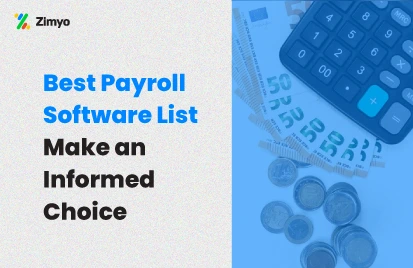Expenses are the cost incurred when a company tries to generate revenue. Whether they be the initial cost of creating your product, paying for your employees, or managing your SCM, expenses are everywhere, helping you streamline your business.
How Many Types of Expenses Are There?
Because of the vast amount of things you need to pay for in a company, there are numerous types of expenses, and the list that this blog will cover will not be exhaustive either. This blog will cover six types of expenses, some of an organization’s primary and most common expenses.
Types of Expenses
Employee Wages
The most basic type of expense incurred in an organization is employee wages. Payroll expenses and employee wages are calculated using spreadsheets like Excel, expense management software like Zimyo, and HRMS software.
Operating Expenses
Operating expenses are day-to-day expenses that pay for utilities. If an organization has offices, this expense pays for the electricity, wifi, internet, maintenance, and supplies for that office. Operating expenses also include marketing and advertising and are a broader category of expenses.
Cost of Goods Sold (COGS)
The cost of goods sold (COGS), is the expenses that are involved in the SCM of a product. The supply chain management of a product involves sourcing the materials required for a product, all the way to producing it. These costs include production, maintenance, packaging, shipping, and labor costs (and sometimes marketing) of a product and involve the aggregate cost of producing a product.
Financing
Financing in a company is a prerequisite. From debt repayments to loan management to shareholder management, financing is a vital instrument to support the company financially. Companies are required to repay their debts, manage the loans they have taken, and manage their shareholders and stakes in the company itself.
Research and Development (R&D)
Research and development are two crucial factors that help with creating and ideating a product. Allowing a company to have an R&D budget allows employees tasked to improve or create a product to do it more efficiently and have a plethora of resources to help them with it.
Taxes
Taxes are the most common type of expenses. A tax is a type of expense that the government requires an organization or individual to provide to them as a form of regulatory expense. Taxes in an organization come in multiple forms: sales tax (a tax on the sale of goods and services; GST), income taxes (a tax on the income of employees), and property taxes (a tax on an existing legal entity – office, building, etc.)
Why Is It Important To Segregate Expenses?
Being able to segregate the various sources of expense your company incurs is very important for understanding what you are paying more for and managing your expenses.
Conclusion
The division of expenses into multiple categories, of employee wages, OpEx, COGS, financing, R&D, and taxes, are very important for the division of expenses and managing the financial side of a company. However, manually calculating these expense can be a tedious task for the finance team. Therefore, organizations opt for payroll software to settle employee expenses quickly and accurately. Zimyo offers a reliable expense management solution to help organizations manage their employee expenses.







